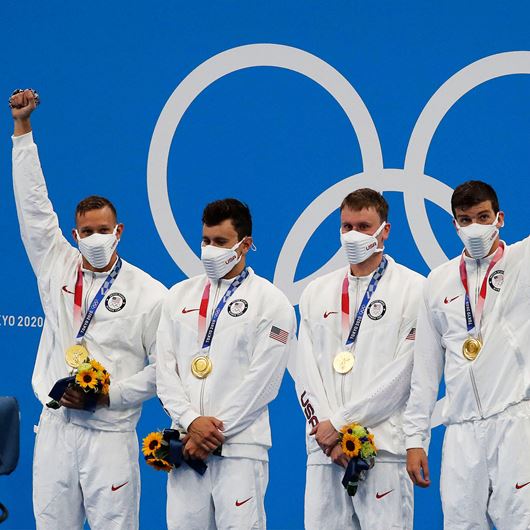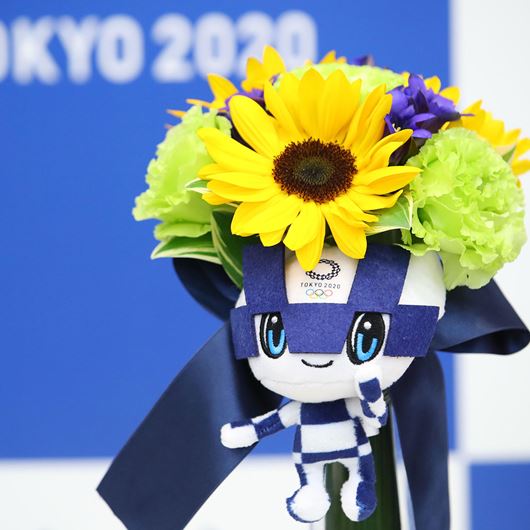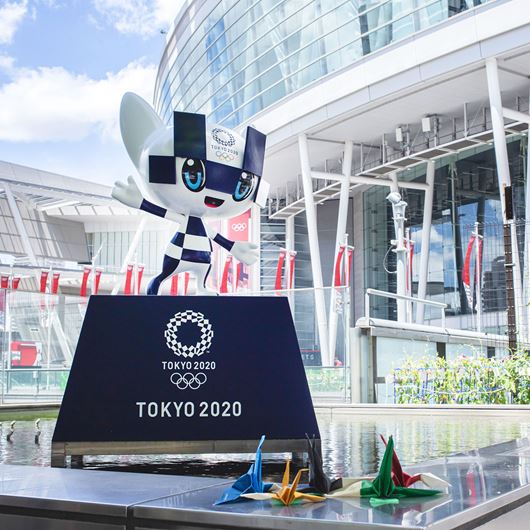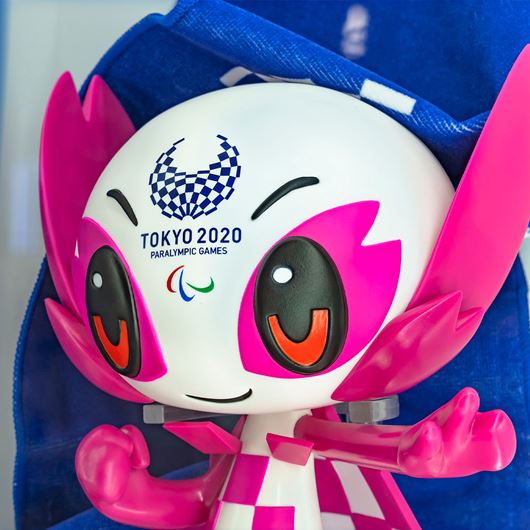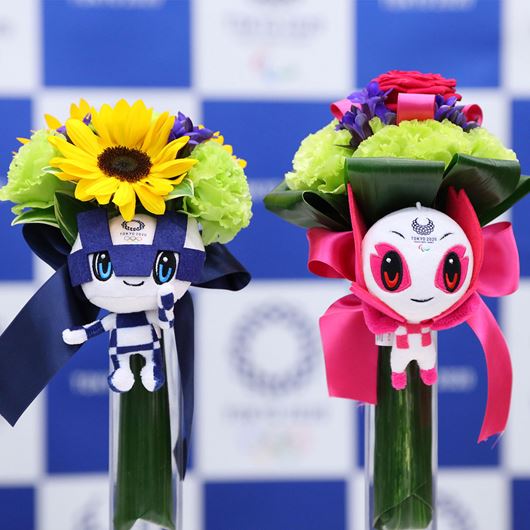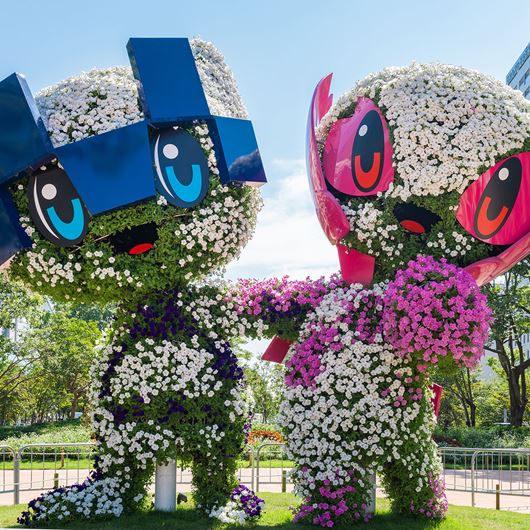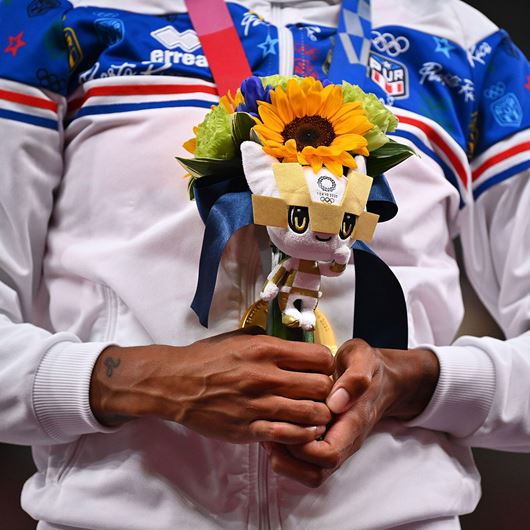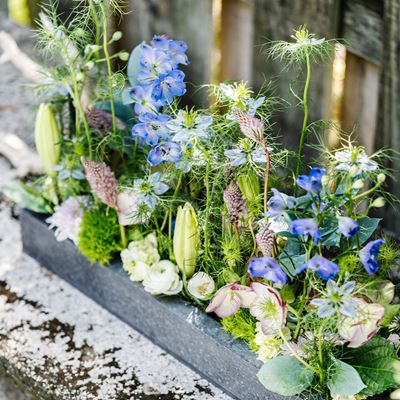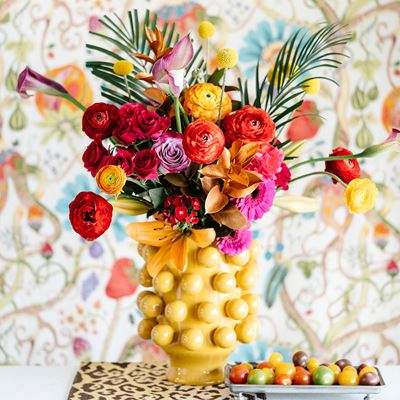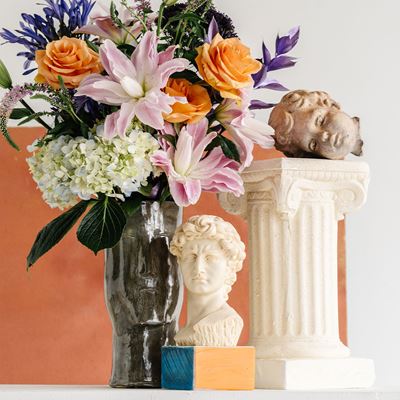Completing our 2023 lookbook series, our sixth and final trend, ATMOSPHERIC, pays homage to our planet's habitats at large. This trending macro view gathers an immersive palette of cool hues, borrowed from the oceans and forests, and pairs it with glowing bright white.
2020 Tokyo Olympic "Victory Bouquets" Carry a Deeper Meaning Than Meets the Eye
As international spectators remain glued to their screens watching the 2020 Olympics unfold in Tokyo, it's not hard to miss the pint-sized bouquets presented to top athletes during the medal ceremonies of each discipline. Designed by Japan's Nippon Flower Council, this commemorative gift (aka "victory bouquet") features a distinct assortment of locally-grown flowers—each with its own purpose and veiled symbolism. These brilliant blooms not only mirror the medalists' shining moment of glory, but also pay tribute to those impacted by the Great East Japan Earthquake of 2011.
ABOUT THE MASCOTS. First and foremost, let's talk about those kooky, anime-esque characters that have been bundled with the victory bouquets—not to mention featured on all of the 2020 Summer Games' promotional materials. Their names? Miraitowa (from the Japanese words for future and eternity) and Someity (from the cherry blossom tree with an added English ending), and they are the official mascots of the 2020 Tokyo Olympics and Paralympics, respectively. Selected in a design competition by over 16,000 Japanese elementary school students, these characters are a celebration of Japan's past and future, along with the Games themselves.
According to the Olympics website, Miraitowa was "chosen to promote a future full of eternal hope in the hearts of people all over the world." Someity, on the other hand, is representative of paralympic athletes who "overcome obstacles and redefine the boundaries of what is possible."
PETALS WITH A PURPOSE. Now onto the flowers. Almost all of the elements in the over 5,000 victory bouquets made for the Olympic and Paralympic Games were cultivated exclusively in the three "regions"—Fukushima, Miyagi and Iwate—of Tohoku that were devastated by 2011’s 9.1-magnitude earthquake, tsunami and nuclear reactor meltdowns. In an interview with the International Olympic Committee, Nippon Flower Council Chairman Nobuo Isomura recounts, "Creating these bouquets using flowers grown mostly in the areas affected by the Great East Japan Earthquake will help convey our gratitude to the people of the world for their cooperation and kindness in the aftermath of the earthquake. It will also help encourage those in the affected areas."
Hoping that their inclusion would inspire global awareness of the beauty of Japanese flowers—not to mention positively impact local growers and communities—organizers of the 2020 Summer Games selected Eustomas and Solomon's seal from Fukushima, sunflowers from Miyagi, gentians from Iwate, and Aspidistra plants from Tokyo to serve as the bouquets' featured protagonists. These botanicals are especially fitting for the role, given that most (especially Fukushima's Eustomas and Miyagi's sunflowers) were grown as an economic and social response to the 2011 tragedies.
Ultimately, these flowers reflect the memories and strength of the people ravaged by natural disaster, and stand for unyielding hope in the wake of recovery—which continues on today.
